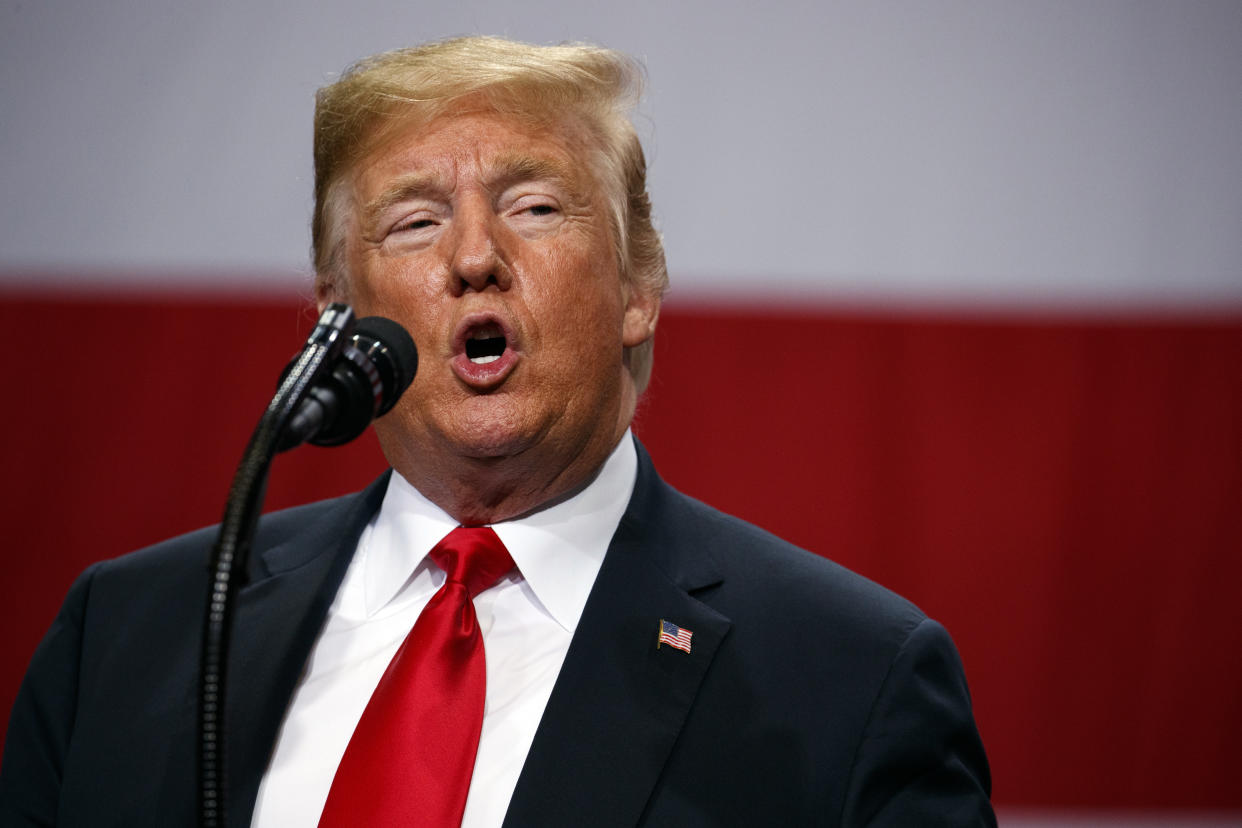Trump explains his theory of mass communication

If President Trump understands anything, it’s how to get his message to the American people.
During a media blitz designed to reassure heartland voters that his implementation of tariffs on Chinese goods would not unduly harm American workers, Trump explained in a speech at a U.S. Steel facility in Granite City, Ill., his theory of mass communication.
“That’s one of the advantages, one of the advantages to speaking to tremendous amounts of — look at all the cameras back there. It’s like the Academy Awards, there’s no difference,” Trump said. “But one of the advantages, I can say it, it’s covered live, much of it, and when I say it they can’t do anything about it. ’Cause I say it. So at least they hear our point of view, and it’s really our point of view, it’s not my point of view, it’s our point of view. And it’s a point of view of common sense and strength.”
Trump contrasted live broadcasts of his speeches with the way journalists cover him, asserting that “You don’t get the real view from the fake news media,” a paraphrase of what he had told the Veterans for Foreign Wars on Tuesday: “What you’re seeing and what you’re reading is not what’s happening.”
The remarks came just one day after Bill Shine, the ousted Fox News executive turned White House deputy chief of staff for communications, blocked CNN White House correspondent Kaitlan Collins from attending a press with Trump and European Commission president Jean-Claude Juncker. According to Shine, Collins was kept out of the event because earlier on Wednesday she had asked “inappropriate” questions about Trump’s meeting with Vladimir Putin and tapes of a phone conversation with his former lawyer Michael Cohen.
Barring Collins from attending was so unusual that it drew a rebuke from Shine’s former network.
“We stand in strong solidarity with CNN for the right to full access for our journalists as part of a free and unfettered press,” Fox News President Jay Wallace said in a statement Thursday.
Of course, answering direct questions from reporters is not the same has having the microphone to yourself at a rally or live event like Thursday’s in Granite City.
Throughout the 2016 presidential campaign, Trump’s political rivals decried the amount of media coverage cable news networks lavished on the billionaire. Figures compiled by the tracking firm mediaQuant showed that Trump received $5.6 billion in free media during the campaign.
While all three cable networks cut away from Secretary of State Mike Pompeo’s grilling before the Senate Foreign Relations Committee on Wednesday to broadcast Trump announcing that the U.S. and the European Union had agreed in principle to work toward the goal of eliminating tariffs, neither CNN nor MSNBC opted to air Thursday’s Trump speech. Fox News viewers, however, were not denied the president’s point of view.
_____
Read more from Yahoo News:


